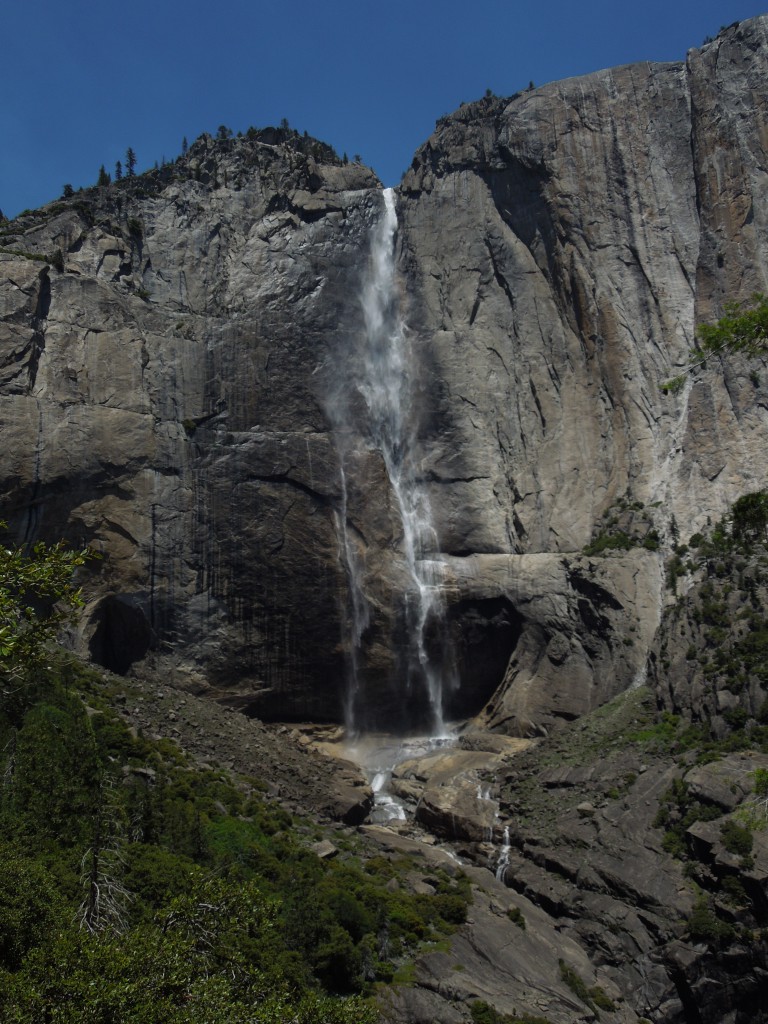After conducting their forest research, GFL student participants are ready to share what they have found.
Story Requirements
The story can be either a written paper (Word document), a slide show (PowerPoint), or a YouTube video.
It should answer the following 5 questions:
- What do your photos show?
- What can you infer about the condition of the forest from looking at them?
- What does GFW tell you about the forest?
- What do other sources tell you about the forest?
- After looking at all of these sources, what conclusion can you make about the forest?
Instructions

1) Take photo(s)
Start taking photos at a local forest with your team. When you manage to capture something unusual or interesting, or something which shows the climate/condition of the forest really well, you can start planning your story.

2) Infer
First, try to infer what your photo can say about the condition of the forest. Does your photo show a dried up river bed? This may be an indicator of a drought, but perhaps the river is always dry during this season. Does your photo show a group of deer? Maybe this means that the forest is in good health, since wildlife thrives in it. Or maybe, just the fact that you were able to come up close enough to the deer to take a photo means that the animals are not truly “wild,” and humans are a major disturbance in the forest.
Make a hypothesis about the forest based on your photo. You will later find evidence supporting or disproving this hypothesis.

3) Visit Global Forest Watch
Find the area where you took the photos on the Global Forest Watch interactive map. Use the map options (Forest Change, Forest Cover, Land Use, etc) on the top of the screen to get information about the forest. Do you see a forest loss or gain? Is the forest used commercially? Is there a lot of people (large population density) in the area?
See the “What is Global Forest Watch?” tutorial for more information on how to use it.

4) Find Sources
Use other sources, such as Google Maps, drought or weather maps or general information about forests and ecology from the Internet. Many large national or state parks have their own website – you may want to check those out. See the “Where Do We Get Data?” tutorial for more information on sources.
Try to find information that is relevant to your hypothesis. For example, if you think your forest is polluted because of human activity, you may want to know about roads, settlements, campsites, and industrial activities near the area.
Always save the URL of the websites you are using, so that you can cite your sources later.

5) Write!
Your story can be either a written paper (Word doc or PDF), a slide show (PowerPoint), or a video (use any video-making software that allows you to export your videos to YouTube). Consider the type of sources you are using: if you need a lot of images and graphs, you may want to make a slide show or video; if you have more written sources, you may want to write a paper. If you’re not sure, just pick the format that’s more comfortable for you. Whichever one you pick, be sure to answer the 5 required questions.
Include the sources you used in a separate Bibliography page in your Word document, the final slide of your Powerpoint, or at the end of your video. If you are making a slideshow, include your photo(s) in one of the slides. If you are writing a paper, save your photo in a separate file.

6) Share your story
Example

When visiting Yosemite National Park in California in 2013, I noticed that the area was relatively hot and dry compared to other forests I have been in. This is especially noticeable in the photo I took of Yosemite Falls – the flow of water was small in comparison to photos of the waterfall I had seen on the internet. After hearing about the California drought in the news and witnessing water conservation efforts such as closing public showers and water fountains, I began wondering whether this drought has negative effects on forests such as Yosemite. I hypothesized that the California drought is causing tree cover loss in Yosemite.
A comparison of the tree cover loss data from Global Forest Watch and drought maps from the US drought monitor does indeed show some correlation between droughts and forest loss. The US drought monitor shows that the drought in the area was nonexistent in 2011, moderate in 2012, and severe in 2013 (Source 2). Meanwhile, the Global Forest Watch interactive map shows little forest loss in the first two years, and a large sudden loss in 2013 (Source 1).
However, further research on the subject shows that the large amount of forest loss in 2013 was not directly caused by the drought, but by the Rim Fire, the third-largest wildfire in the history of California (Source 3). The Rim Fire burned parts of Stanislaus National Forest and Yosemite National Park (Source 4). It started in the Groveland District, Yosemite, when Keith Matthew Emerald, a bow hunter, built a campfire despite local fire restrictions (Source 5). The fire spread because in recent years, there had been less funding for preventive firefighting (Source 4). Preventive firefighting is starting small, controlled fires to burn the underbrush that could fuel big, out-of-control fires. More long-term causes of the fire include human influence: after a century of grazing, logging, and replanting, forests like Yosemite are overgrown and filled with dry debris ready to burst into flame.
In conclusion, the hypothesis that droughts cause forest loss in Yosemite National park was only partially confirmed. In fact, irresponsible human actions – both Keith Matthew’s blunder and long-term human actions caused the wildfire. The drought is only a background condition that made the fire more probable.
Sources
1) http://www.globalforestwatch.org/
2) http://droughtmonitor.unl.edu/
4) www.livescience.com/39408-how-rim-fire-grew-big.html
5) http://www.sfgate.com/crime/article/Bow-hunter-charged-in-historic-Yosemite-wildfire-5675072.php
